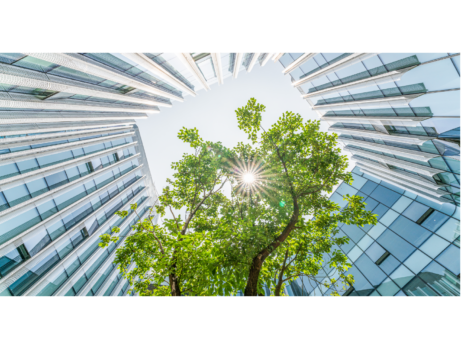

Asset managers are simultaneously feeling growing client demand around demonstrating environmental, social and governance (ESG) investment principles and applying far greater pressure on companies when it comes to ESG issues.
A rising focus on sustainable investment brings with it new operational requirements as companies increasingly seek to embed sustainability expertise and insight across all aspects of the business in a consistent, cohesive manner, reforming structures and practices in order to drive strategic decision-making across asset classes and processes. New operating models are required.
The Sustainability Group at abrdn is a direct response to this challenge. Launched in March of this year, its ambition is “to maximise the power of investment to deliver sustainable outcomes”. While the group contains a large team of multidisciplinary sustainability specialists, it also pulls expertise and research from across the business to generate insights that define frameworks and standards, ensure active ownership, drive product development and enhance client outcomes.
Chief sustainability officer (CSO) Amanda Young defines this series of interconnected ambitions as “the sustainable investing value chain”.
Working on the “chain”
“It starts with defining the things we should be looking at, and that has to be driven by research and insights,” says Young, who, prior to leading the Sustainability Group served as abrdn’s global head of responsible investment. “But our insights team is not necessarily conducting all that research themselves; they have to connect with other parts of the business – the fund managers, the economics and thematics teams – and get across all asset classes in order to ensure this is a coordinated, group-wide effort.
“What the Sustainability Group does is help drive the agenda. We build that agenda from taking lots of different views – of our own experts and investors, but also civil society, regulators and, of course, our clients. It must all feed in.”
This, the CSO says, is the greatest shift she has seen in her more than 20 years in sustainable investment – the sustainability team moving from a sideline support role to adopting a central strategic position in supporting the group as a whole.
Young stresses that this is “evolution, rather than revolution”, the progression of extensive work done by the businesses over the past five years and dedication to sustainable practices dating back three decades. “It’s about reorganising ourselves,” she explains. “It’s not necessarily people doing new jobs, rather refining their roles, taking on more strategic positions within the firm. We already had sustainability experts working at the coalface with our investment teams, but this is about supporting the wider business of sustainability.”
There are four core themes that drive the Sustainability’s Group’s work: enabling a net-zero world; preserving natural capital; promoting a fairer society; and championing strong governance and business ethics. “For us, those first three are the biggest problems the world faces today and we need to find solution-orientated steps to address them,” says Young. “But that cannot be achieved without strong business ethics and governance systems, so a big part of our work is looking at how, in our role as an investor and through our activities, we can encourage such behaviours.”
Among the leadership team within the Sustainability Group is a head of active ownership, responsible for delivering a consistent view on corporate governance, working particularly closely with the investment and regulatory teams, as well as external bodies, and ensuring voting aligns with the house and investment view.
“We need to be good stewards of our assets,” Young explains. “That comes down to the Sustainability Group setting standards, strategy and expectations around active ownership. It has always been complementary to our research, but we want to align it much more closely, so that we are able to bring it all back to our themes and say, ‘under preserving natural capital or enabling net zero, this is the active ownership strategy’”.
Walking the talk
Young acknowledges that how those findings are fed into abrdn’s investment frameworks is still a work in progress. “Something I really want to push through is a consistent narrative,” she says. “Every asset class has amazing capabilities in terms of ESG integration, understanding risk and building it into portfolio analysis, but it’s not hung on one common framework. Creating that is a big mission for the group.”
There is also the challenge of how to demonstrate the impact of such an approach. Building consistency across one’s themes, frameworks, ownership and product is a seismic ambition, but it also demands new ways of gauging and articulating results.

“It was OK a few years ago to tell a client not to worry; that everything was being done on their behalf to drive sustainability,” says Young. “Now they want to see the actual outcomes of all that activity. We need to be able to report that better. That is a data and technology challenge and another major area of focus.
“We have to walk the talk. Greenwashing is a major issue in the industry right now, with marketing machines outpacing the ability to actually deliver. Our intent is to be standard-bearers of credibility and authenticity in this space – a partner of choice in sustainability – but that’s only possible if you deliver.”
And Young very much sees this as a partnership that comes down to listening to one’s clients, as opposed to simply dictating behaviours. As a global asset manager, clients in different regions and markets are at different stages of their sustainability journey, so education also forms a core part of that engagement process.
“Many don’t know exactly what they want, so it’s about working with and enabling them to define those intentions,” Young explains. “That might look somewhat different depending on whether you’re sitting in Europe, the Americas or Apac [Asia-Pacific], but it’s about setting principles and frameworks that meet our clients’ priorities and risk thresholds, while being able to explain to them in a credible, data-driven way their exposure to climate, equality, the preserving of natural capital and the actionable steps they can take.”
Beyond risk
Young says that “risk is fundamentally important, but most asset managers have got to that stage”.
“It’s about looking beyond the risk: how can we align with our four pillars for positive impact? It also comes down to asking, who is our ultimate investor? These big institutions – pension funds, insurance companies, and the like – often don’t ask what their underlying beneficiaries actually want. Who is that? It’s you, it’s me, it’s the person in the street. It’s therefore incredibly important to get a real sense of societal expectations. The voice of the client must, ultimately, also be society’s voice.”
Young acknowledges that abrdn will never get all of its portfolios at the extreme end of impact investing but believes being able to report sustainability outcomes in more granular ways across the four pillars will significantly accelerate the direction of travel, generating both financial return and sustainability benefits.
“I believe in the power of money to generate positive change,” she says. “If you can create and support a circular economy, business models that support preserving natural capital, surely that’s the way to go.”
Accounting for natural capital
A major area of focus in this regard is abrdn’s work around biodiversity. A 2021 study of 270 asset managers by Responsible Investor and Credit Suisse found that only 28% were taking the issue into account when assessing their investments’ sustainability impacts. Establishing frameworks and reporting capabilities in this area, Young believes, must be an urgent priority. The team has undertaken significant research and is building engagement systems to try and understand its exposures, but a lack of suitable data sets remains a challenge in developing a formalised approach.
“For us, it’s the next big thing after climate change,” the CSO explains. “We are starting to see more activity in the space and some indication of regulation that might be coming down the line – the establishment of the Taskforce on Nature-related Financial Disclosures (TNFD), for example.
“The challenge is accounting for natural capital across sectors, businesses and regions. Climate change gives you something consistent to measure – greenhouse gas emissions – and we’ve seen Scopes 1, 2 and 3 become part of the global language. What I hope we’ll see in the coming years is people coming together to try and find common metrics.”
Positioning abrdn at the forefront of such developments reflects Young’s vision for the firm to help drive the sustainable investment agenda, but she stresses the need for this to be a collaborative process.
“I keep being asked whether our ambition is to be a leader,” she says. “To be honest, I’m tired of that word. Leadership is not something you talk about being; it’s earned. What we are aiming for is to be authentic and credible – a partner of choice in sustainability. If we achieve that, the flows will come.”







